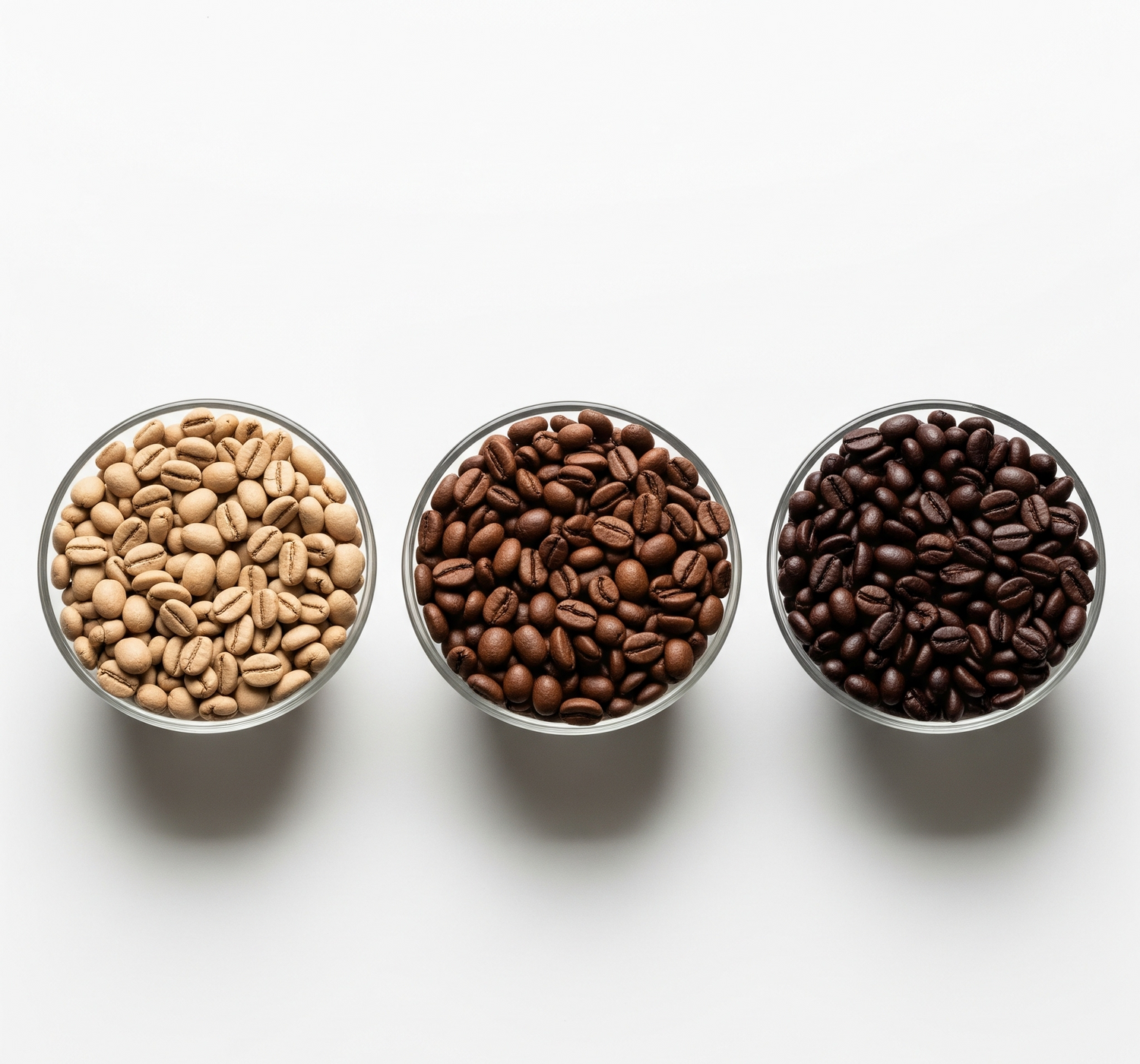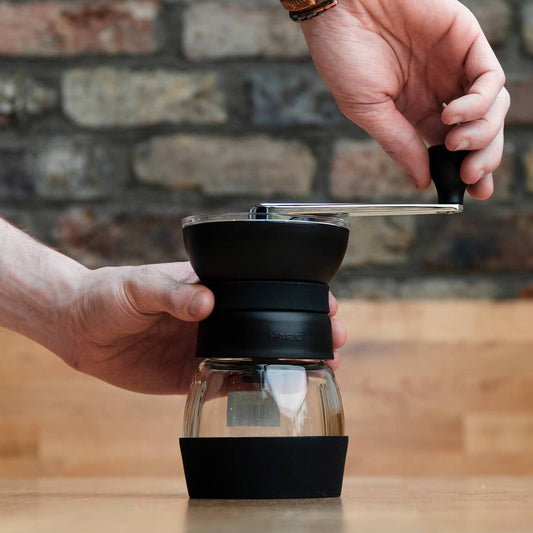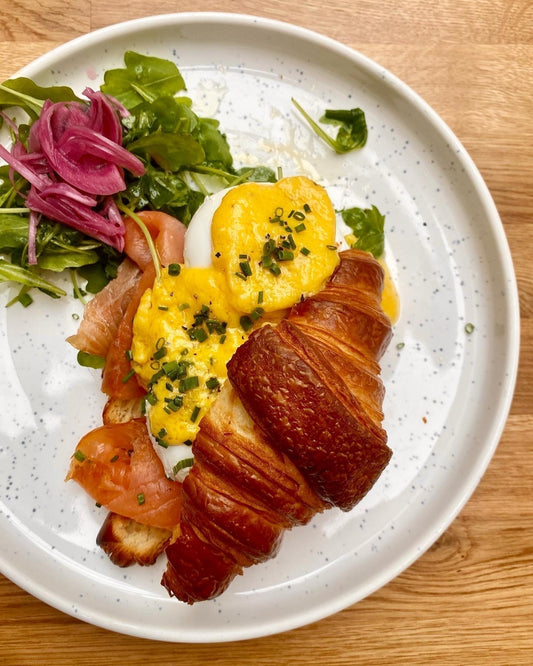From the volcanic soils of Guatemala to the misty highlands of Ethiopia, each bean carries a story shaped by its origin, processing method, roasting and even preparation.
But what makes one cup taste like ripe mango and another like toasted hazelnuts?
That’s where sensory profiles come in.
In this guide, we’ll explore the sensory profiles of coffee, what defines its flavour, the main tasting notes and what they reveal, how roasting influences taste, and how to identify flavours in practice.
We’ll also introduce the coffee flavour wheel, a powerful tool that helps translate what you feel in the cup into a shared language.
What defines coffee flavours?
Flavour isn’t just what hits your tongue—it’s what lingers, what blooms in the nose, and what texture coats your mouth. Coffee flavour is a symphony of taste, aroma, and mouthfeel, shaped by:
-
Origin: Soil, altitude, and climate affect bean chemistry.
-
Varietal: Arabica vs. Robusta, plus sub-varieties like Bourbon or Gesha.
-
Processing: Washed, natural, or honey methods influence clarity and sweetness.
-
Roast level: Light, medium and dark each emphasizes different characteristic.
-
Brewing method: Espresso, pour-over, French press—each reveals different facets.
The influence of roasting on coffee flavours
Roasting transforms green beans through Maillard reactions and caramelisation, creating new flavour compounds.
-
Light Roast: Preserves origin character; bright acidity, floral/fruity notes. Ideal for pour-over or drip brewing.
-
Medium Roast: Balanced sweetness and body; chocolate, nuts, caramel. Versatile for most brewing methods.
-
Dark Roast: Bold, smoky, low acidity; roast-forward flavours dominate. Best for espresso or French press.
Roast development time also matters—longer roasts deepen body and reduce acidity.

Coffee flavour is a complex interplay shaped by hundreds of chemical compounds that develop during growth, processing, and roasting.
The key components include:
-
Acidity: Not to be confused with sourness, acidity gives coffee brightness and liveliness. Think citrus, green apple, or berry.
-
Sweetness: Often linked to caramel, honey, or fruit notes. A well-balanced sweetness rounds out the cup.
-
Bitterness: Present in all coffee, but excessive bitterness can indicate over-roasting or poor extraction.
-
Body: The tactile feel of coffee—light, medium, or full. It’s the difference between skim milk and cream.
-
Aftertaste: The lingering flavour after swallowing. It can be clean, spicy, nutty, or even floral.
These elements combine to create the flavour profile—a unique fingerprint that defines each coffee.
The main flavours of coffee and what they reveal
Coffee flavours are incredibly diverse, and each tasting note offers insight into where the bean comes from, how it was processed, and what kind of cup you’re in for.
- Fruity notes, such as berry, citrus, or stone fruits, often indicate high acidity and are commonly found in beans from African origins like Ethiopia or Kenya. These coffees are lively, bright, and complex.
- Floral notes, like jasmine, lavender, or rose, suggest a delicate aromatic profile, typically seen in lightly roasted coffees that have undergone washed processing. They tend to be elegant and fragrant, often appreciated by those who enjoy subtlety. For those seeking a beautifully floral coffee to brighten up summer mornings, Ethiopian Arabica offerings are a great place to start.
- Nutty flavours such as almond, hazelnut, or peanut signal a smooth and comforting profile. They're prevalent in beans from Brazil or Colombia and often found in medium roasts. These coffees offer a balance between acidity and body, making them ideal for everyday drinking.
- Spicy undertones like cinnamon, clove, or pepper suggest boldness and complexity. You’ll often find these flavours in beans from Sumatra or India, especially those processed using wet-hulling methods.
-
Chocolatey notes, from sweet milk chocolate to intense dark cocoa—reveal rich and full-bodied profiles. These are frequently found in Central and South American and are beloved for their warmth and depth.
- Earthy notes, including tobacco, cedar, or mushroom, point to a rustic, grounded character. These flavours are typically associated with Asian origins and darker roast levels, delivering a deep and robust experience. Dark roasts, in particular, tend to have pronounced bitterness and lower acidity while highlighting these earthy characteristics.
- Sweet flavours, such as caramel, honey, or brown sugar, round out the profile and create a mellow, approachable cup. These usually result from natural or honey processing methods and medium roast development, offering a comforting sweetness with every sip.
Together, these notes compose the sensory spectrum of coffee, helping you find the flavour journey that best matches your mood, your palate, and your ideal brew.
The Coffee Taster’s Flavour Wheel: translating sensory notes
The Coffee Taster’s Flavour Wheel is a visual tool that maps out the wide spectrum of flavours and aromas found in coffee. It helps tasters—from professionals to everyday drinkers—identify and articulate what they’re experiencing in the cup.
Think of it as a sensory dictionary that turns vague impressions like “fruity” or “spicy” into precise descriptors like “blackberry” or “clove.”
The Coffee Taster’s Flavour Wheel, developed by the Speciality Coffee Association and World Coffee Research, helps you articulate what you’re tasting.

How to use the flavour wheel
Using the wheel is a guided journey from general impressions to specific flavour notes:
-
Start at the centre: Begin with broad categories like “fruity,” “nutty,” or “spicy.”
-
Move outward: Narrow down to subcategories (e.g., “berry” or “brown spice”) and then to specific descriptors like “raspberry” or “cinnamon.”
-
Use your senses:
-
Smell first: Aroma reveals volatile compounds—fruit, spice, florals.
-
Slurp loudly: Aerates coffee and spreads it across your palate.
-
Note acidity: Is it crisp like lemon or mellow like plum?
-
Assess body: light like tea or heavy like syrup?
-
Describe aftertaste: lingering? clean? spicy?
-
Compare and calibrate: to match flavours with real-world references (e.g., “strawberry” = thawed Dole strawberries at room temperature).
-
Practice regularly: The wheel is a training tool—your palate improves with repetition and curiosity. Track your impressions and preferences.
Explore the interactive version here.
The Flavour Wheel is more than a pretty poster—it’s a powerful tool for:
-
Building a shared language: It helps baristas, roasters, and consumers communicate clearly about flavour.
-
Training your palate: It guides you to notice subtle differences and develop sensory memory.
-
Improving quality control: Professionals use it to detect defects or desirable traits during cupping.
-
Enhancing enjoyment: It turns coffee drinking into a mindful, immersive experience.
Find your sensory profile
Ask yourself:
-
Do you prefer bright and fruity or rich and chocolatey?
-
Do you enjoy light-bodied or full-bodied coffee?
-
Do you like clean finishes or lingering complexity?
Try coffees from different origins and roast levels. Use the flavour wheel to describe them. Over time, you’ll discover your sensory sweet spot.
Final sip: coffee as a sensory journey
Coffee is a universe of flavour waiting to be explored. By understanding sensory notes, roast influence, and tasting techniques, you unlock a deeper appreciation for every cup. Whether you’re sipping a floral Ethiopian or a nutty Brazilian, you’re not just drinking coffee—you’re experiencing a story told through taste.
So grab your mug, your flavour wheel, and your curiosity. The perfect coffee for you is out there—and now you know how to find it!






